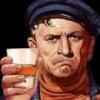General Chat / The Offical Photography Thread
-
 19-March 06
19-March 06
-
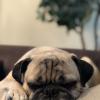
 Brent
Offline
Went to the PHX zoo today, took about 150 pix... these are my fav...
Brent
Offline
Went to the PHX zoo today, took about 150 pix... these are my fav...
.jpg)
And I just shot this on the trail to the bighorn...
And I ended the day with this...

I took about 150 total... I really wanna go back on a less busy day (which would be any day but a holiday with EVERY baby in the world there. Like today).Edited by The Beta Factor, 11 November 2008 - 09:40 PM.
-
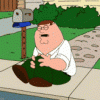
 ChillerHockey33
Offline
Any tips on editing a night shot like this? Ive done some constrast editing to it, but think it could look alot better with some editing.
ChillerHockey33
Offline
Any tips on editing a night shot like this? Ive done some constrast editing to it, but think it could look alot better with some editing.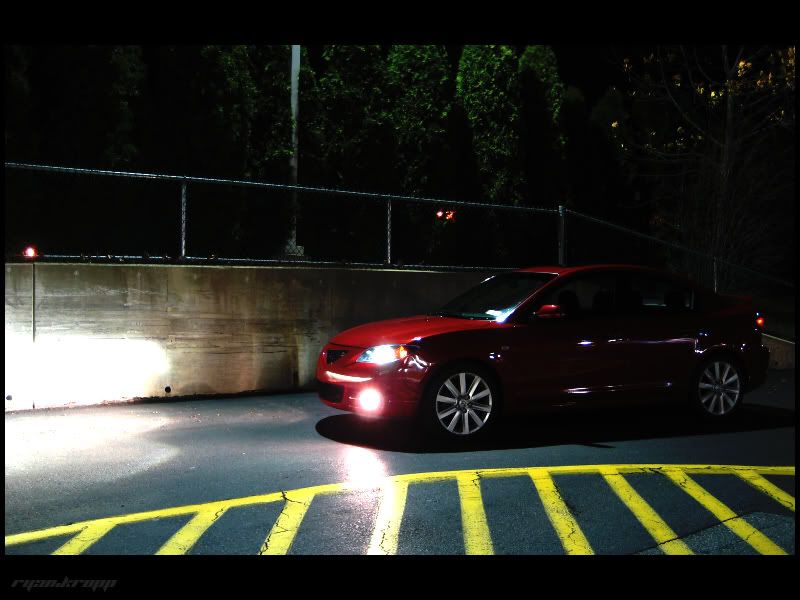
-
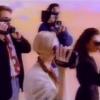
 Camcorder22
Offline
Fire near my house the past weekend. Perhaps you heard about it on the news depending on where you are.
Camcorder22
Offline
Fire near my house the past weekend. Perhaps you heard about it on the news depending on where you are.



my favorite one. When I record an album this will be the cover.

this ones shitty, but you can see how close the fire got to our house. We had to evacuate. -
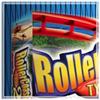
 RCTFAN
Offline
Chiller - It depends what you want out of it really. And what program you have, then we can give some more feedback.
RCTFAN
Offline
Chiller - It depends what you want out of it really. And what program you have, then we can give some more feedback. -

 RCTFAN
Offline
Here are some I took at The Eden Project in in Cornwall, England for those that have never heard of it. I went with a few friends to see the festivities and have dinner, but I took my camera along....
RCTFAN
Offline
Here are some I took at The Eden Project in in Cornwall, England for those that have never heard of it. I went with a few friends to see the festivities and have dinner, but I took my camera along....

The above two are of the 'seed' which is a granite sculpture set in the heart of the 'core' building. I love this room, such a juxtaposition to the warmth of the rest of the building and I feel B & W helps accentuate that
This is a shot from inside the Mediterranean Biome looking out towards the rest of the site, hence some very odd reflections.
Here is a Bench that stretches round a bend with the wood itself warping and bending with/against the curve of the bench.
Finally here is a stitched panorama of the view when upon exiting the main entrance building, taken when I arrived at around 5pm.
I'm expecting some good crits from you Magnus
-

 ChillerHockey33
Offline
ChillerHockey33
Offline
I want to bring out more detail, but nothing over the top. I use Paint Shop Pro 8Chiller - It depends what you want out of it really. And what program you have, then we can give some more feedback.
-

 Magnus
Offline
artist: Nice B/W street photography. I like the one with the girl hiding behind the handcuffs the most.
Magnus
Offline
artist: Nice B/W street photography. I like the one with the girl hiding behind the handcuffs the most.
The lens distortion ruins the first picture ...
Brent: Work on the exposure. The giraffe pictures are overexposed. Would look a lot better without the overexposure.
Chillerhockey: Nice to see you want to get the most of your shots. The problem you are running into here is the dynamic range of your camera. The light on the left is overexposed, while the background is very dark.
You most likely want to have the side of the car a little brighter. I do not sure paint shop pro, but you can try change the lightness curves, maybe you need to put your changes into a new layer and add a mask to it, so that only the car is being edited. (Using a lamp instead of the computer would have been easier.)
Try getting rid of the tree in the background.
camcorder: Impressive documentation. Hope you are alright and your house did not get up in fire.
RCTFAN: Your pictures suck (If that is what you wanted to hear.)
(If that is what you wanted to hear.)
Well not really ...
The first one does not work for me too well, as I have no idea what I am looking at. This could be great, but the motive is a little to boring for this kind of effect.
The second picture is great. Get rid of the vignetting however.
Third looks like a random cutout of something larger, but there is not much interesting to see, especially when you do not know what it is. The light makes it look very flat.
The fourth shot is one of these pictures you can see everywhere. Technically good, but I am not a fan of bench photography.
I would like to see a larger version of the panorama, as that could be really good. Cannot see if the stitching worked will in such a small version, but this motive is very promising. -

 RCTFAN
Offline
Chiller - I'm can't remember if theres the shadows/highlights adjustment menu or not, if so then use that to calm the highlights and lighten the shadow detail.........and then go an readjust curves and/or levels afterwards..
RCTFAN
Offline
Chiller - I'm can't remember if theres the shadows/highlights adjustment menu or not, if so then use that to calm the highlights and lighten the shadow detail.........and then go an readjust curves and/or levels afterwards..
If not then I'm afraid theres not much that can be done except some creative cropping and curve adjustment.
Magnus- cheers for the reply...
All the pics have brief descriptions, and theres a link to the website where theres more info, although i guess that's not the point you're trying to make.
The 2nd pic has a little vignetting but the top of the pic is actually where the room constricts and so is slightly darker. In fact the whole room is undulates, so i'm annoyed that the background looks very flat.
Finally I sent you a PM with a link to the larger file, although you could probably wind up there somehow going through the picture properties -

Corkscrewed Offline
Chiller: Shoot in RAW.
on the serious side... it's a bit hard to recover detail on an underexposed picture that's taken in JPEG (which is probably what this was). You can manipulate curves if you have that feature (slide toward the lighter side; in Photoshop, a very generic simple way is adding a point and sliding the curve toward the upper left), play with a shadow/highlights feature (if you have it, but that WILL make your photo very grainy depending on the extremity of the adjustment), or play with the exposure tool if PaintShopPro has it.
It would be easier starting with the photo itself. If you can set up lighting, that would be the easiest (playing with a real flash--not just the pop-up type on your camera--might have provided better, more even lighting). In lieu of that, setting your shutter speed longer to provide a longer exposure would have been able to capture more light and thus more detail. But of course, you'd need a tripod, and judging by the look of that photo, you'd probably want something in the 1/2 to 2 second range. Of course, you also have your headlights of the car, which would be blinding at that exposure, so really, what you'd have to do is merge the two together (one showing detail at the highlights, or in this case, literally the lights; and one showing detail in shadows, or basically the actual car). That's pretty much what HDR really is. The camera cannot capture the range of light to darkness that our human eyes can perceive live, so that's the adjustment you'd have to make to simulate what was there.
--
Cam, were you over near the Sayre Fire or by OC? Crazy pics. It's definitely that time of the year, when brush seems to just give up on live and commit suicide by spontaneously combusting. Seems like you're safe and your house made it, so glad to hear that.
Seems like you're safe and your house made it, so glad to hear that.
--
RCTFAN, neat pics, but it's hard to tell much from the small versions. They all strike me more as texture shots than really targeting anything. So as texture photos, I do like them, because there's nice composition created by what you're photographing. But I have to agree with Magnus that you're never really looking at much of anything, so aside from the texture, there's not really much to critique. -

 ChillerHockey33
Offline
Yeah i didnt really have time to set stuff up. I took that shot at a convenience store, spur of the moment. Had my point and shoot in the glove box.
ChillerHockey33
Offline
Yeah i didnt really have time to set stuff up. I took that shot at a convenience store, spur of the moment. Had my point and shoot in the glove box.
I set the exposure to +1 to help bring in some light, but obviously with the lights on, I didnt want to set it too long.
And what other file type would I be able to shoot in? -

Corkscrewed Offline
Common camera settings are JPEG, TIF, and RAW, as far as I know. TIFF is just lossless JPEG in that it won't really give you any additional controls and information, but at least the file won't erode. -

 Magnus
Offline
I am not sure what camera you are using ChillerHockey, but as Al stated, there are three common formats for saving pictures. (Not all cameras support all three formats)
Magnus
Offline
I am not sure what camera you are using ChillerHockey, but as Al stated, there are three common formats for saving pictures. (Not all cameras support all three formats)
jpeg is the most common format and gives small file size with high quality. The compression is not lossless, but often hardly visible. Colour depth is 8bits per channel only. This makes 256 colours per channel.
Use jpeg for showing pictures on the internet or giving pictures to others.
tiff is not supported by many cameras. The main advantages are lossless compression (optional) and 16bits per channel.
This format is a lot better for editing pictures, than jpeg. Because of the high file size it is not very good for sharing pictures.
raw format (nikon calls it *.nef) is the format giving you the highest quality. It also supports 16bits per channel and is lossless. (Some cameras have lossy compression as well.)
The format basically stores what the sensor data and often requires some editing. Main advantage is that you can set the white balance without loosing quality on the computer and usually get a lot more details out of the shadows with less noise, than tiff and especially jpeg.
However, you need special software the edit the raw files and the files sizes are high.
My camera is usually set to raw + high quality jpeg, even though I hardly use the jpegs. I use adobe lightroom to correct the raw files and export them to 16bit tiff. local edits are done with photoshop. I often keep the *.psd for pictures i edited a lot, otherwise the 16bit tiff.
jpegs for web are created out of the *.psd.
This workflow should provide highest quality, but requires some hard disk space and time to edit the pictures. -

 ChillerHockey33
Offline
O alright, I just use a simple Canon PowerShot SD630 point and shoot. Im looking into upgrading to a more advances camera with interchangable lenses.
ChillerHockey33
Offline
O alright, I just use a simple Canon PowerShot SD630 point and shoot. Im looking into upgrading to a more advances camera with interchangable lenses. -

Corkscrewed Offline
And required a very dedicated photographer.This workflow should provide highest quality, but requires some hard disk space and time to edit the pictures.
 (Which Magnus is, obviously, to his credit.)
(Which Magnus is, obviously, to his credit.)
Anyway, my second HDR attempt (maybe I'll post my first one tomorrow or sometime this week) that hasn't resulted in absolute crap:
The tone mapping is the part that's getting to me. Ignore the slight blur of an imperfect overlap, this was done without a tripod. But I can't seem to get anywhere near the amount of luminosity in those spectacular HDR examples I see online. The most I've been able to get was the less spectacular but still utilitarian increase in dynamic range, achieving some detail in shadows and/or highlights to provide an image more representative of what the human eye sees.
So I guess I can basically do a decent of of practical HDR, but I can't really do much in the artistic side yet. Any tips or links to GOOD tutorials? I'm also thinking that different programs have different effectiveness, and that Photoshop may not be the one to yield the super spectacular results unless I really manually go crazy. =/ -

 Magnus
Offline
Thanks for the compliment Al.
Magnus
Offline
Thanks for the compliment Al.
As for the HDR image:
You really need to get a tripod for that, even though there are quite some people doing freehand HDR pictures. With the high fps of the D300 it works pretty well with daylight, but gets a lot harder in the evening with longer exposure times. The results often do not turn out as good as wanted.
It seems like the image is blurred because of not using a tripod and the bad focus. Have a look at the stone bench in the foreground, which is the sharpest part of the image.
The trees in the background are blurred because of wind most likely. You need a really windless day to do perfectly sharp HDR images with trees and bushes in it.
The motive you chose does not seem perfect for an HDR image however. Usually HDR images are taken because the dynamic range of the camera is too small to display the complete range of the motive. The dynamic range of this scene is not very high and the HDR technique is not needed.
What you most likely wanted to achieve is a very colorful sky, which is a lot easier to get by simply putting an layer mask over it and raising the contrast by using the curves option of photoshop.
Sometimes it helps to take two pictures from a tripod. One with the correct exposure of the sky and another with the correct expose of the foreground ...
If you have and questions contact me. If it is about HDR images please sent/ upload the single pictures as well. This usually help a lot to see where to improve.
Magnus -

Corkscrewed Offline
Well, given the time of day, the dynamic range actually *was* exceeded. Hence why I took a few exposures to play with. But yeah, I suppose masking could have achieved the same thing. I was more curious as to whether Photoshop is good enough to get the job done or not. And also, I was trying to get a clue as to how exactly people get such a overly vivid range of lumination in those shots.
The photo was taken with the camera on a flat, immovable surface. But any distortion is probably due to the very minimal shaking of the camera when changing stops, which apparently was enough to nudge the angle or position just so.
I'll try to email some stuff at the end of this week, when I have some time.
 Tags
Tags
- No Tags

.JPG)
